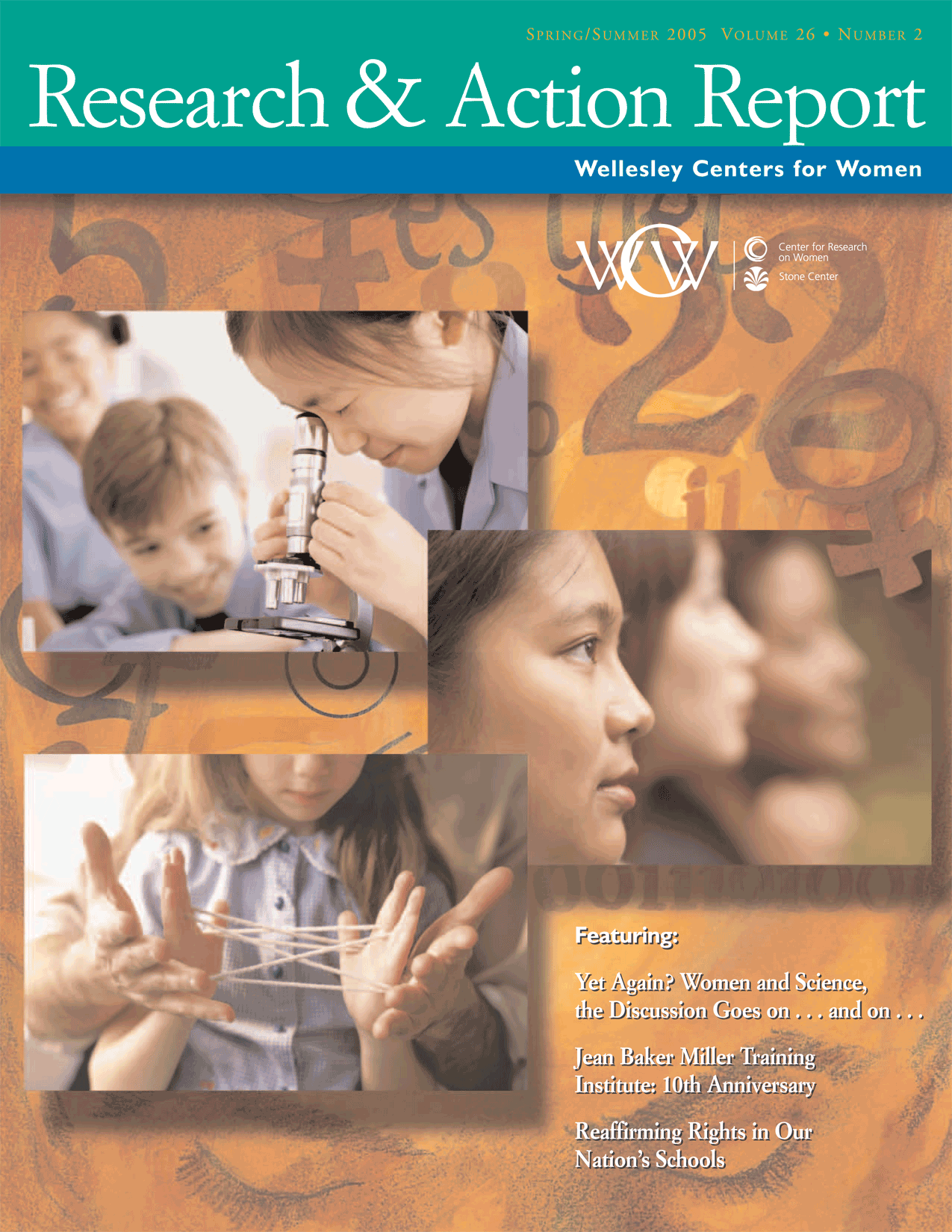Research & Action Report Spring/Summer 2005
Welcome to the post-Columbine world of zero-tolerance school discipline. Zero tolerance means one strike and you’re out, no matter what. Schools are quick to suspend students for anything that could be deemed a weapon, a drug, or a threat, and the result is that students are being controlled in ways that shred their Constitutional rights. Students have been suspended for papers they have written, thoughts they have had, and drawings they have created (Commonwealth v. Milo, M., 433 Mass. 149 [2001]). Elementary-school children have been suspended for comments made in the heat of a touch football game or in response to a teacher denying permission to go to the bathroom, comments that schools characterized as "death threats." In a case from Jonesboro, Arkansas, an eight year-old boy was suspended for pointing a chicken nugget toward a teacher and saying "Pow, pow."
Zero tolerance is a deeply flawed approach, leaving no room for teachable moments, graduated interventions, or progressive discipline. It is a policy that insults teachers and violates the civil rights of students. The judgment of educators is discounted, and one punishment is meted out for a dizzyingly broad range of acts. Standards are subjective, but sentences are uniformly severe. Not surprisingly, zero tolerance has racial implications—disproportionate numbers of students of color have been suspended and expelled under zero tolerance policies.
Educators are now including bullying behaviors under the ever broadening umbrella of zero tolerance. Schools proudly state that they will not tolerate bullies; there are bully-buster posters around school buildings and new rules to cover bullying, and eradicating bullies is all the rage with state legislators, school officials, and consultants. There is no agreement on how to define bullying or what behaviors constitute it—the parameters of bullying are very elastic. Almost anything has the potential to be called bullying, from raising one’s eyebrow, giving "the evil eye," and making faces (all very culturally constructed activities) to verbal expressions of preference for some people over others. Naming these behaviors "bullying" is opting out of the framework of civil rights and heading down an ambiguous path. Problems pop up all along this path. Sometimes very egregious behaviors are labeled "bullying," when in fact they may constitute criminal hazing or sexual/gender arassment. Calling these behaviors "bullying" means there is no opportunity to dentify, conceptualize, or investigate them as rights violations under specific legal criteria.
"Bullying" is an age-appropriate term to use when children are very young, rather than "sexual harassment" or "sexual violence." But certainly by the time children are in sixth grade, we ought to stop speaking in euphemisms or generalities. Let’s name the behaviors for what they are. To keep using the term "bullying" with older children does them a serious disservice. We infantilize them when we keep calling their behaviors "bullying," especially if their behaviors might constitute criminal conduct. Words matter. By sixth grade, children need to be able to label and understand conduct for what it is, whether harassment, hazing, or sexual violence.
Why have school administrators been so quick to embrace the antibullying movement and to abandon the antiharassment focus? If behaviors are labeled "bullying," administrators and their school districts cannot be sued in federal court. Harassment and discrimination based on race, disability, gender, or national origin are civil rights violations and rigorous standards of proof must be met. Bullying is not against any federal law, and it is not tied to civil rights. Subsuming serious violations under the bullying umbrella means schools avoid the liability they would face if sued successfully in federal court for a civil rights violation. It may also mean that students who have been bullied lose their rights to redress.
Approaching the subject of bullying without also talking about harassment and hazing leads us in the wrong direction. Rather than assuring civil rights and equal educational opportunities for all students, there will be more suspensions and expulsions under zero tolerance for bullying. Before we know it, we’ll be suspending students left and right for all sorts of "discomfort" that they may have caused. Bullying is too arbitrary, subjective, and all encompassing a concept to be the basis for a sound disciplinary approach. Because there is no threshold for bullying, its use as a criterion is rife with opportunities for abuse of power.
The broad sweep of the anti-bullying movement and zero tolerance laws are both very troubling. Once we back away from rights, we may have trouble reclaiming them. Instead, let’s stick with rights. Let’s use them, extend them, and reaffirm them.
Nan Stein, Ed.D., is a senior research scientist at the Wellesley Centers for Women.


